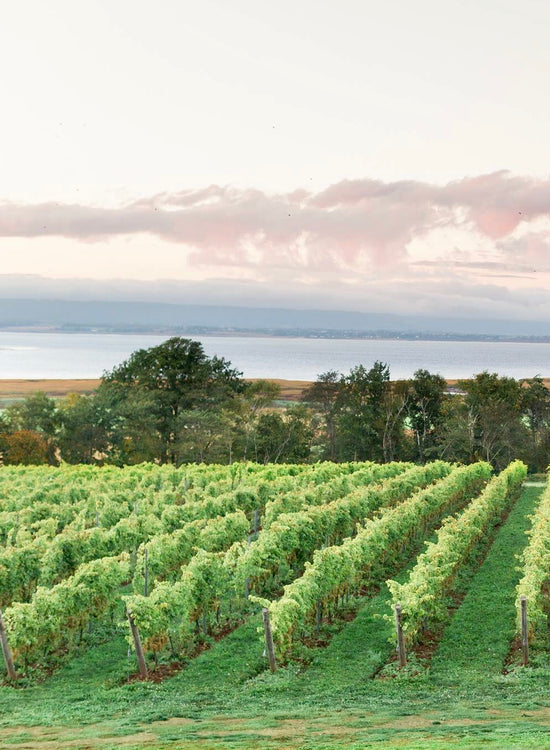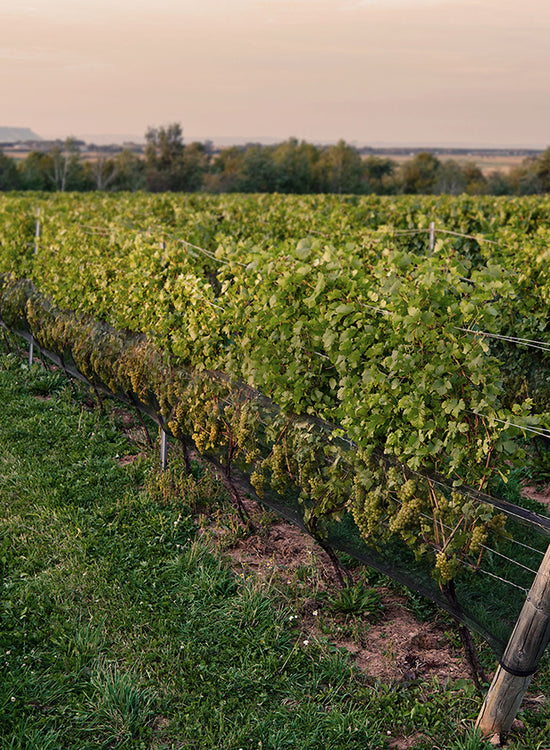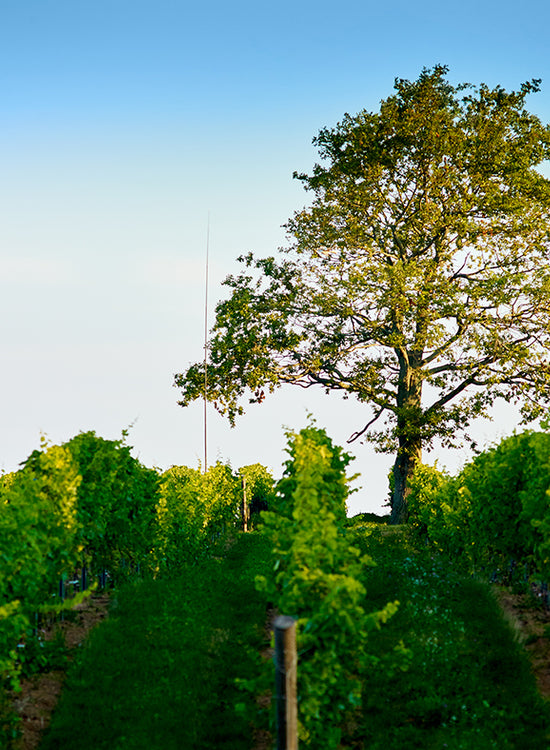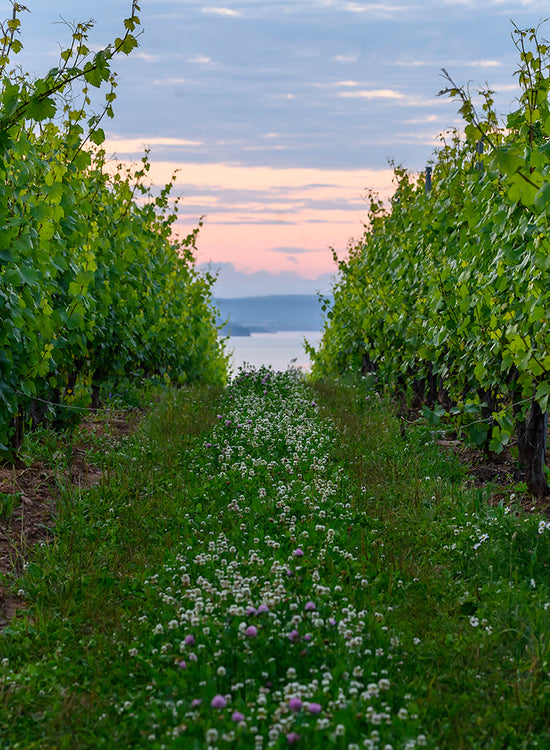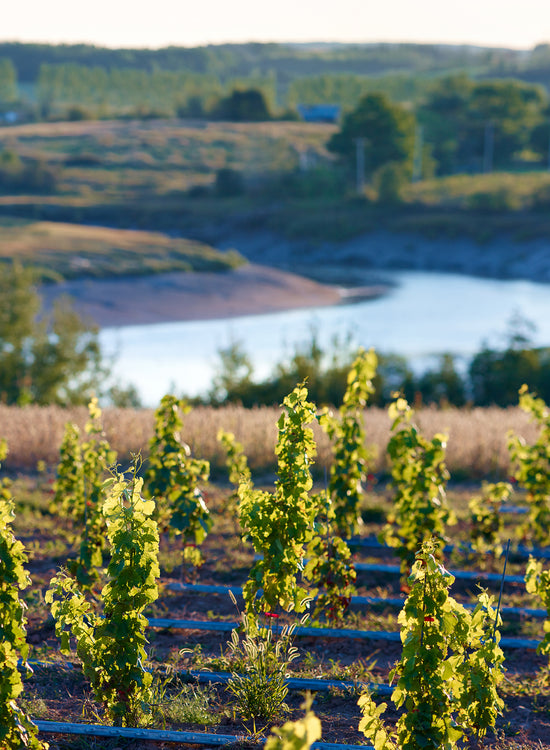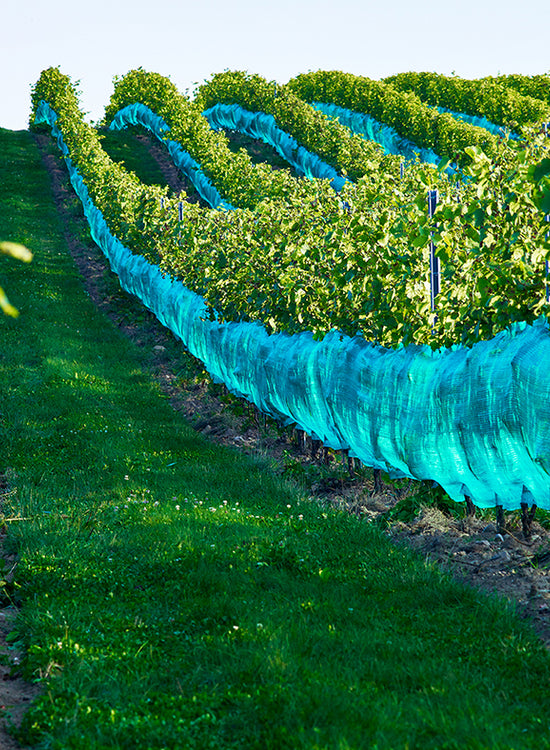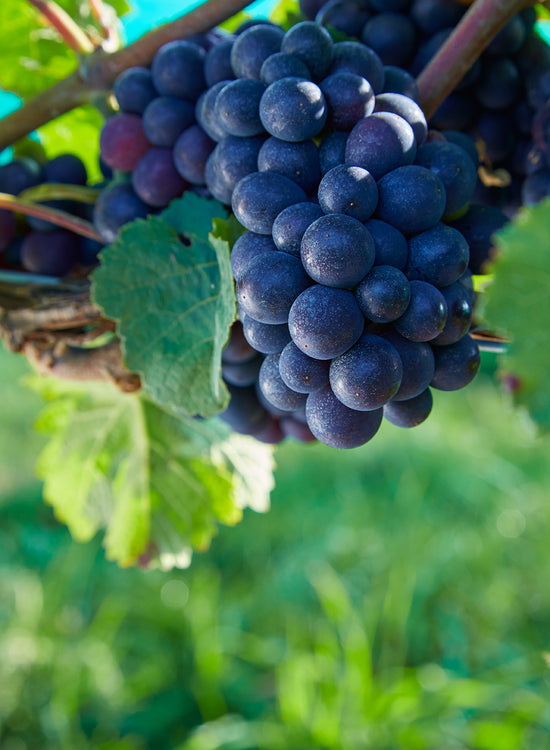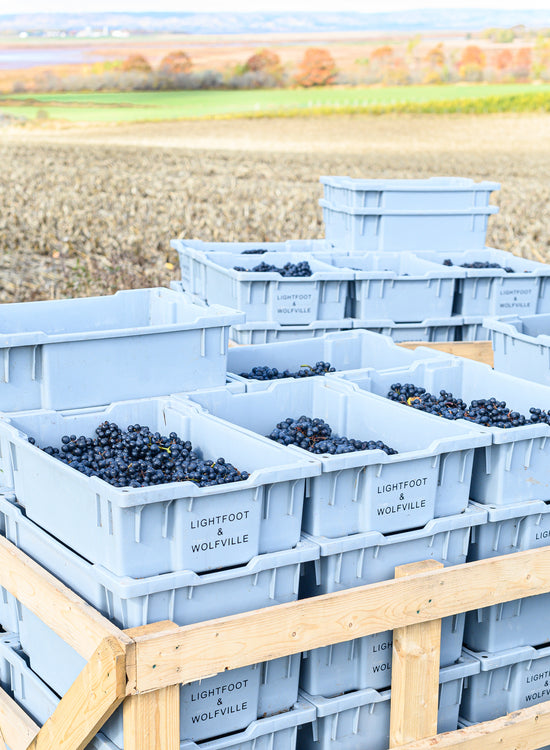We farm 40 acres of vines on two distinct sites, one on the edge of the Town of Wolfville and the other in nearby Avonport. Both vineyards have breathtaking views of Cape Blomidon, and benefit from the Minas Basin's moderating impact on climate.
Another shared aspect of the terroir at both sites is the rare Wolfville Formation Soil that makes up a mere 3 percent of our province's soil spectrum. The upper root horizon consists of glacial till with coarse sandy loam, while the deep root horizon’s clay content provides ideal moisture retention.
